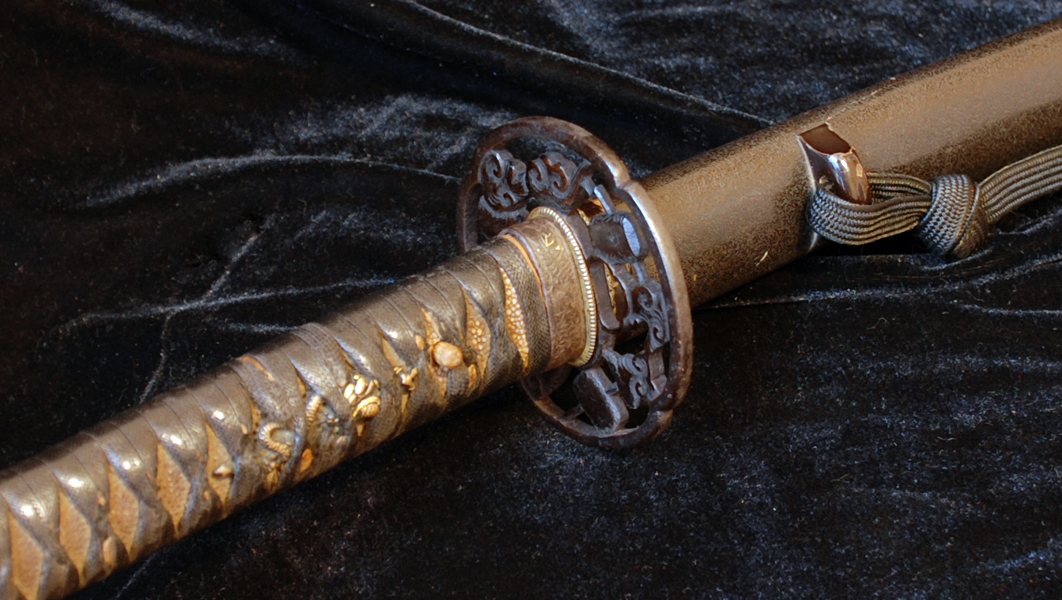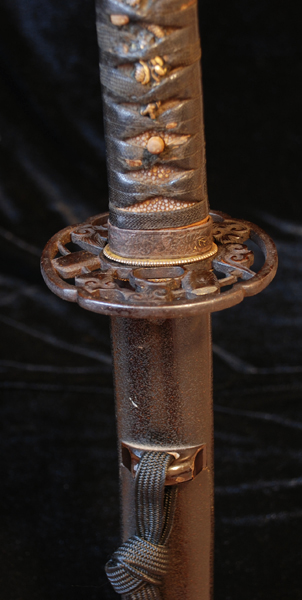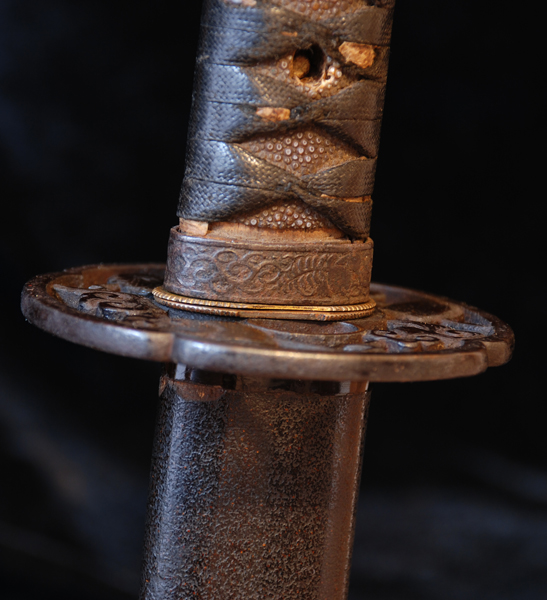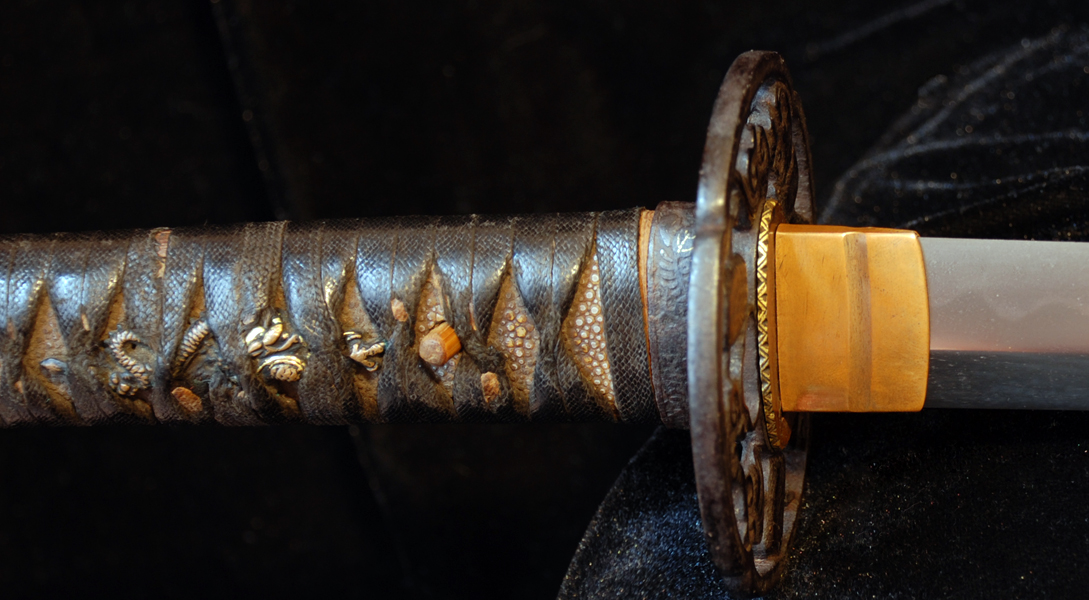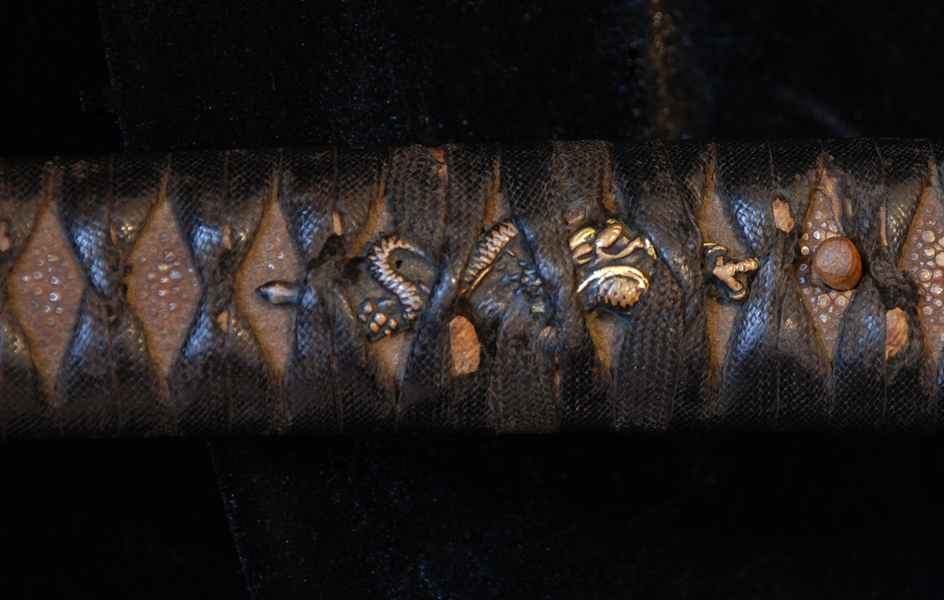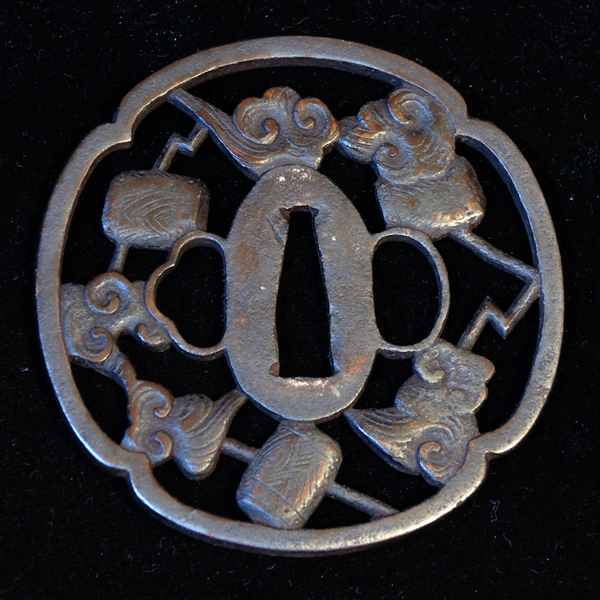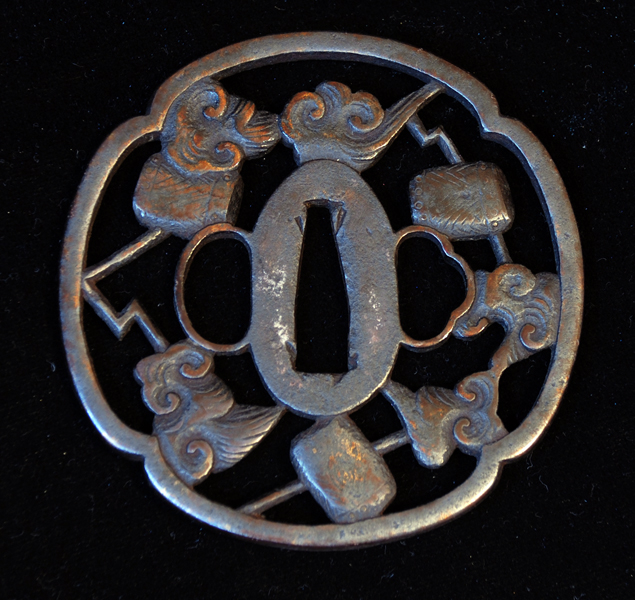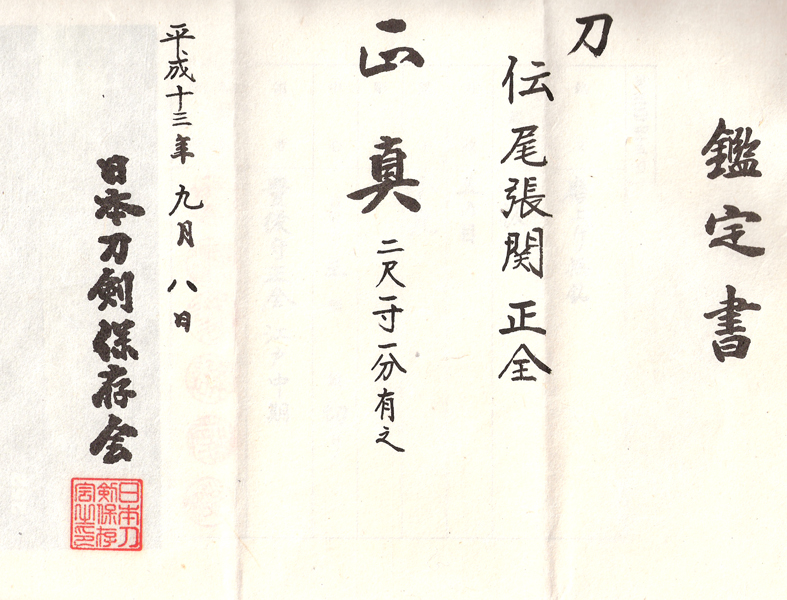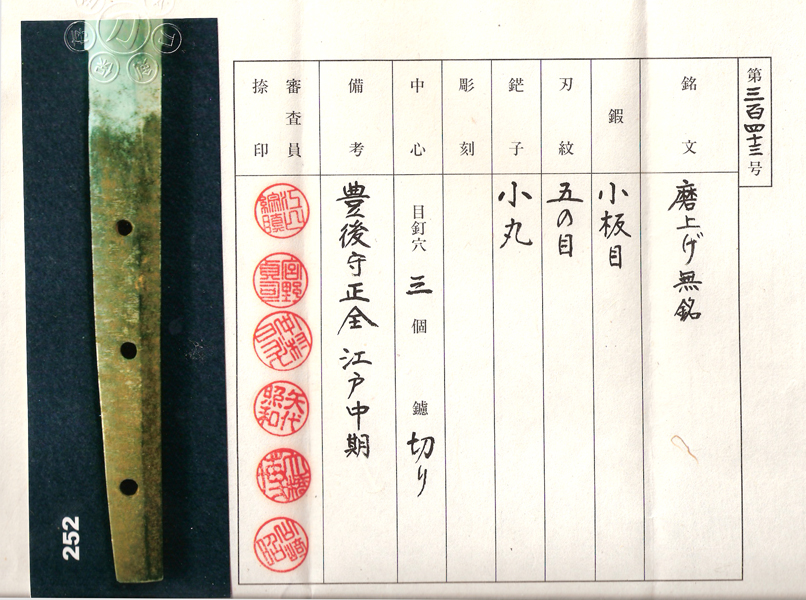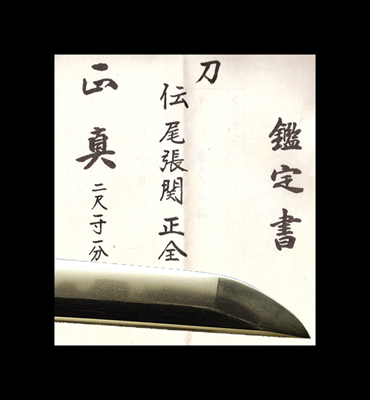|
| |||||||||||||||||||||||||||||||||||||||||||||||||
Hamon : Nie-deki gunome midare. The nioiguchi is thick and full of vibrant hataraki. There are abundant sunagashi, which overlap thick ashi. There are some togari and choji shapes mixed in as well.
Boshi : Midare-komi with a medium long kaeri. The active boshi has a thick nioiguchi. There are many sunagashi and there is abuntant nie in the boshi ji.
Kitae : Ko-mokume with some masame hada in places. Ji-nie is present and there is tobiyaki.
About this sword : This is a katana is atribituted by the NTHK to the well known Owari Seki smith, Bungo no kami Masayasu. This is a strong fighting sword and shows all the hallmarks of what we expet to see in a celebrated nie deki shinto workmanship. The hamon is packed with hataraki as is the boshi. In speaking of this Masayasu, Fujishiro's Shinto Hen explains that he is mentioned in old books as being "a master craftsman from Kannbun through Genroku". There is speckled rust pitting in several places. Please see the photos. This katana received a 72 point kanteisho paper from the NTHK (NPO) under Mr Miyano in 2001.
This smith is shown and discussed in many books and there are various ways of pronouncing his name. We mention this to aid those interested in research. Masatomo is used in "Kokon Kaji Bikou" (an old book), "Nihonto Jiten", K. Tokunou, (1973), "Dai-Nippon Token Shin-ko", S. Uchida (1933) and also Fujishiro's "Nihon Toko Jiten, Shinto-hen" is likely to read it as Masatomo but the English translation is written as Masayasu. Masanori is used in "Toko Soran" N. Kawaguchi/K.Iida. Masayasu is used in Hawley's "Japanese Swordsmiths (Revised Ed.)" and "Token Kakaku Jiten", Kogeisha (1975).
This katana comes with its original Edo period koshiare. This koshirae has not been modified or restored, even the tsuka ito is original. The horn kojiri is gone from the saya, otherwise the mounts are complete. This koshirae shows its age and one who can appreciate this character can feel the history of the sword through it. For example, the side of the iron fuchi that faces outward from the Samurai's body, which would be directly exposed to the elements in daily use, is quite worn, while the inner facing side is in notably nicer condition. (see photos ) This wear occurs from many years of use, long ago and we enjoy seeing this humble fuchi. The tsuba is a good quality large iron sukash of the drum and lightning of Raiden, the thunder God. Menuki are large kinko dragons with handanchi style kashira and the original copper habaki is present.
Overall, this is a well made Masayasu katana with original Edo period mounts and a 72 point NTHK (NPO) paper.
SOLD












